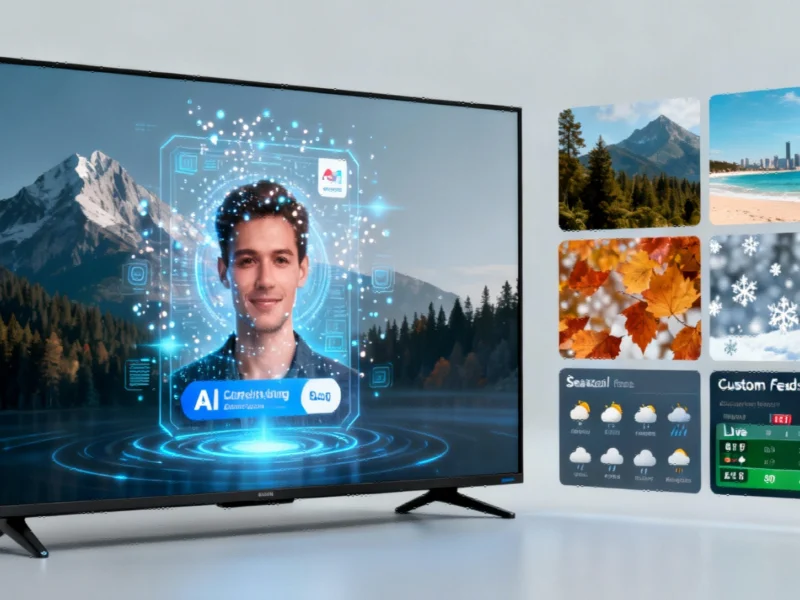AI-Driven Advertising Coming to Idle Television Screens
DIRECTV is reportedly preparing to launch a groundbreaking advertising system that will utilize artificial intelligence to create personalized commercials featuring viewers’ own faces, according to reports from industry sources. The television service provider has announced a partnership with Glance to develop this new advertising platform that will transform how consumers interact with their idle television screens.
How the New Advertising Technology Works
Sources indicate that the system will activate when televisions are in idle mode, replacing traditional screensaver content with dynamically generated advertisements. The technology goes beyond conventional targeted advertising by incorporating facial recognition capabilities that allow the integration of a viewer’s actual facial features directly into commercial content. This approach, analysts suggest, represents a significant evolution in personalized advertising technology.
Implementation Timeline and Device Compatibility
The report states that the new feature will roll out to customers using Gemini devices, which include both the satellite-connected Gemini box and the broadband-adapted Gemini Air dongle. While a specific launch date hasn’t been confirmed, implementation is expected to begin in “early 2026,” according to company statements. The technology leverages broadband connectivity to deliver real-time personalized content.
Industry Perspective on Interactive Advertising
Glance’s CEO and founder, Naveen Tewar, believes this technology will create a “new two-way relationship between TV watchers and their idle screens,” according to the company’s official statements. Industry analysts suggest this represents a broader trend toward interactive and immersive advertising experiences, similar to developments seen in other technology sectors such as Microsoft’s AI-powered Windows evolution.
Alternative Viewing Options Remain Available
Despite the new advertising features, reports confirm that traditional screensaver options will remain available to customers. Users can still choose nature photography, travel imagery, and seasonal themes, or create custom screens displaying live weather updates and sports scores for their favorite teams. This approach to user choice reflects growing consumer demand for control over their viewing experience, a trend also evident in discussions around environmental claims in technology and content policy debates in AI development.
Consumer Choice and Privacy Considerations
The implementation reportedly includes multiple viewing options, allowing customers to select their preferred idle screen experience. While the facial integration feature represents the most technologically advanced option, sources indicate that users concerned about privacy or preferring minimal advertising will have alternatives. This layered approach to consumer choice appears designed to address potential concerns while introducing innovative advertising technology to the television viewing experience.
Industry Context and Future Implications
Market analysts suggest this development represents part of a broader shift toward more interactive and personalized television experiences. The technology’s ability to integrate viewer facial features into advertisements marks a significant advancement in targeted marketing, though industry observers note that consumer acceptance will depend heavily on implementation details and privacy safeguards. The early 2026 timeline gives the companies opportunity to refine the technology based on initial user feedback and industry developments.
This article aggregates information from publicly available sources. All trademarks and copyrights belong to their respective owners.



